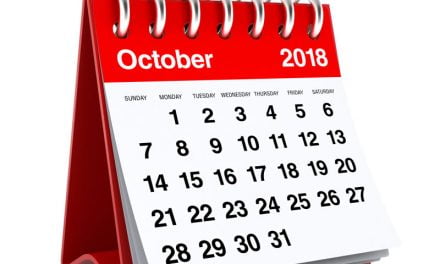You don’t need 96 rolls of loo paper, but you do need to stay abreast of the facts regarding the Covid-19 outbreak.
By the time you read this, things will probably have changed again in Australia’s rapidly evolving response to the Covid-19 outbreak. Already the text that was written on Monday for the TTN print edition is out of date. But already there are known strategies that will help reduce the health impacts of this pandemic, plus government strategies that will reduce its impact on the economy.
One thing that will remain true is that we shouldn’t be panicking. After unprecedented drought and fire, it’s easy to make the mistake of thinking this is another crisis we’ve never faced before, but Australia has faced down several pandemics in its short history, including H1N1 only 11 years ago. And if you’re thinking ‘that wasn’t as bad’, you’re right, but that’s because containment measures worked then. We know how to halt the spread of pandemics, it’s just a matter of people and governments acting together in a timely fashion for the good of the community. Keep in touch with the latest advice and information on the virus using the links below under ‘For more information’.
Basic containment and social distancing strategies have been well publicised. As of the time of writing, Victoria and the ACT have declared states of emergency, non-essential gatherings of more than 100 people indoors or 500 people outdoors are banned, international travel is restricted, international arrivals who do fly in are required to self-isolate, there are restrictions on visiting nursing homes and social distancing is advised for all – no hugs or handshakes and try to keep a distance of at least 1.5m. Further measures are likely.
Covid-19 is a serious disease for many people, especially those over 65 or with common underlying health issues, including asthma, cancer, blood disorders, chronic kidney or liver disease, diabetes, epilepsy, pregnancy, heart disease or lung disease.
Even for healthy young people who often (but not always) have only mild illness, there is a high risk of spreading disease. And in an industry like ours where so much of the brains trust is locked in older bodies, that’s not a good risk.
Isolating the troops
The number one weapon against disease spread is limiting contact between people. Every person who can stay at home represents many fewer contacts in the community. While many timber industry jobs are hands-on, just as many aren’t.
Some bosses are reluctant to let people work from home, but productivity usually lifts without workplace interruptions. Additionally, if staff are needed for caring duties for kids out of school or similar, they may be able to maintain a full or part workload outside of standard hours. Look on it as a chance to learn how good your business is at accommodating flexibility and special needs – which may help you be more flexible and productive in the future.
Meetings are the bane of many modern workplaces, and you don’t want all your best people in one room. Happily, gamers have spent the last decade developing brilliant multi-person, real-time voice and text chat apps that allow you to collaborate separately but seamlessly. Discord is the most famous, but Slack and Teamspeak may be more useful for businesses. For technophobes, Hangouts Chat from Google and Microsoft Teams are easy to use, though the former requires gmail logins. Some allow simultaneous windows for minute taking and file sharing.
For people who need to be on-site, staggered meal breaks, scrupulous hygiene and your choice of Spock hands, bowing or salutes to replace handshakes all help.
Association advice
The timber associations have been doing an admirable job of keeping their members up to date with developments. Several have sent out comprehensive information covering employer responsibilities and all those with HR and legal teams are making advice available for employers in line with current state and federal positions (which are subject to change). MGA TMA has regularly updated info online, plus printable health posters available for download. Contact your association if you have questions or need assistance.
TTIA has also done an excellent summary of the Federal Government’s first stimulus package (see below for highlights) and all the major associations are working hard to make sure new information is sent out as quickly as possible. Additional measures are said to be imminent.
As with every pandemic, the risks from economic damage are ultimately as significant as those from the disease, which is why it is such a relief to see the Morrison government and state governments adopting sensible stimulus and support packages for businesses and workers.
Some of the key points of the first Federal package as summarised by TTIA are:
- Increasing the instant asset write-off from $30,000 to $150,000 and expanding access to the measure to include businesses with aggregated turnover of less than $500 million.
- A time-limited investment incentive (through to 20 June 2021) with accelerated depreciation deductions. Businesses with a turnover of less than $500 million will be able to deduct 50% of the cost of an eligible asset on installation with existing depreciation rules applying to the balance.
- The Boosting Cash Flow for Employers measure will provide up to $25,000 back to small and medium-sized businesses, with a minimum payment of $2000 for eligible businesses. The payment will provide cash flow support to businesses with a turnover of less than $50 million that employ staff. The payment will be tax free.
- Eligible employers can apply for a wage subsidy of 50% of an apprentice’s or trainee’s wage for up to nine months from 1 January 2020 to 30 September 2020. Where a small business is not able to retain an apprentice, the subsidy will be available to a new employer that employs that apprentice. This measure will support up to 70,000 small businesses, employing around 117,000 apprentices.
- Household stimulus measures will assist around 6.5 million low-income Australians, including a one-off, tax free $750 payment to social security, veteran and other income support recipients and eligible concession card holders.
- Severely affected regions and communities that are disproportionately affected by the Covid-19 outbreak will benefit from a $1 billion fund set aside for them, including those heavily reliant on tourism, agriculture and education.
- The ATO is also providing relief from tax obligations on a case-by-case basis.
For more on the package, visit https://treasury.gov.au/coronavirus
Private companies are also stepping up to the plate: some have committed to paying casual workers who are off sick or in quarantine, while others are cutting back where they can to help pay their most vulnerable staff or keep the business afloat. Four-day work weeks where possible, taking excess leave and senior management taking pay cuts are a few common measures where everyone can come together to help get both the lowest-paid and the business as a whole through the next few months.
While we are definitely in one of those weird moments in history where it’s hard to know what’s coming next, there are two important things to keep in mind. Firstly, pandemics eventually peter out with time and we’ll soon understand more about the lifespan of this one. Secondly, when this is all over, we still have 2000 houses and a bunch of shops and sheds that need rebuilding. All those fire recovery plans will still be waiting for us after Covid-19 passes.
And none of us will ever look at toilet paper the same way again!
For more information
Don’t be guided by what you read on Facebook or in magazines – even this one. Social media contains a lot of crap and the situation is changing rapidly, so even articles that strt out accurate can be quickly outdated. The ABC’s expert science team is conveying up-to-the minute information on TV, radio and online (www.abc.net.au), and official medical sources in Australia can be trusted to give accurate information, though updates can take a little time for some pages. Visit:
for local guidelines and information.
Meanwhile:
- Keep washing your hands with soap for at least 20 seconds, making sure to scrub all of the hand, nails and wrists. Use sanitiser if needed.
- Limit direct contact with others where possible.
- Self-isolate if sick or if in contact with a known Covid-19 sufferer. Check the above links for recommended isolation periods.
Get a flu shot. It won’t help with Covid-19, but flu is another serious respiratory infection and you definitely do not want them together.











